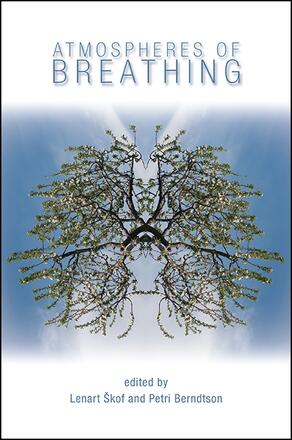
Atmospheres of Breathing
Alternative formats available from:
Attempts to think anew about philosophical questions from the perspective of breath and breathing.
Description
As a physiological or biological matter, breath is mostly considered to be mechanical and thoughtless. By expanding on the insights of many religions and therapeutic practices, which emphasize the cultivation of breath, the contributors argue that breath should be understood as fundamentally and comprehensively intertwined with human life and experience. Various dimensions of the respiratory world are referred to as "atmospheres" that encircle and connect human existence, coexistence, and the world.
Drawing from a number of traditions of breathing, including from Indian and East Asian religion and philosophy, the book considers breath in relation to ontological, hermeneutical, phenomenological, ethical, and aesthetic concerns in philosophy. The wide-ranging topics include poetry, theater, environmental issues and health, feminism, and media studies.
Lenart Škof is Professor of Philosophy and Head of the Institute for Philosophical Studies at the Science and Research Center of Koper, Slovenia, and the coeditor (with Emily A. Holmes) of Breathing with Luce Irigaray. Petri Berndtson is a doctoral candidate of philosophy at the University of Jyväskylä, Finland.
Reviews
"With its wide-reaching overview of a number of different aspects of breathing it offers an eye-opener into the importance breathing has had throughout history for most cultures around the globe. " — Paradigm Explorer
"On the whole this edited volume goes some way in helping one to re-learn to see the world in a respiratory way, offering various approaches to a world in which 'everything breathes again' … Škof and Berndtson's project is indeed a worthy one, particularly when it stresses the importance of the atmosphere which is breathed in, an entity that is too often taken for granted and consumed via processes that are more often than not unconscious. " — Phenomenological Reviews
"Atmospheres of Breathing, the first collection of its kind, explores an emerging 'respiratory philosophy' of great consequence for philosophy and other fields. Its rich and diverse essays, many written by the pioneers of this radically new direction, show the deep historical and intercultural roots of such a philosophy, ranging from treatments of forerunners like Zhuangzi and Heraclitus to contemporary theorists of breathing such as Abram and Kleinberg-Levin. Presented here is the vision of innovative ways in which philosophy, on its own or inspired by spiritual practices, can bring breathing into the center of its concern. This is a landmark book that scintillates with brilliant and original insights. If taken as seriously as it deserves, this book has the potential to revolutionize contemporary and future thought. " — Edward S. Casey, author of The World at a Glance and The World on Edge
"Air, the misunderstood element, finds ways and means of advancing to places where no one reckons with its presence; and, more significantly, it makes space on its own strength for strange places where there were previously none. " — Peter Sloterdijk